What are foliage plants?
The term foliage plants include plants whose main decoration is not striking or intensely fragrant flowers but the foliage of vivid colors, patterns, textures, or shapes.
Choosing the right plants and combining them with flowering ones, you can transform your garden or yard, providing interest throughout the season and giving it a new dimension with an almost professional landscaping flair which you can see in gardening books.
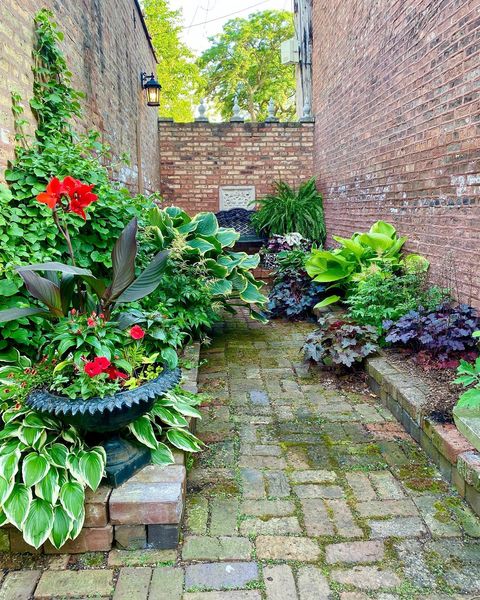
Many foliage plants are durable garden perennials that will reliably decorate your yard year after year or are seasonal plants that you can grow in containers and arrange on flower beds or along paths and patios.
In a great selection of plants that amaze us with their foliage, below we bring you the list of the best foliage plants that will carry the garden’s structure while the flowering plants fade!
Foliage plants for partial shade
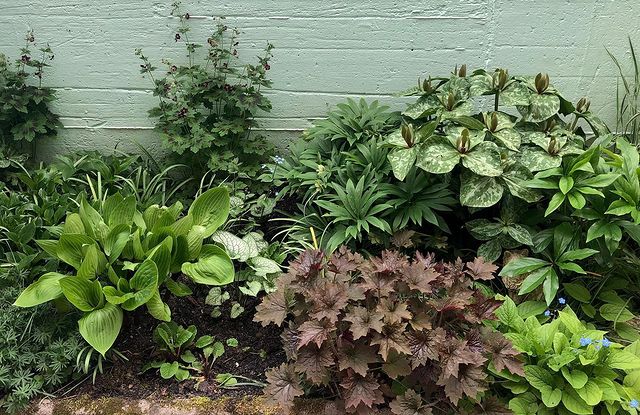
1. Hosta Plantaginea
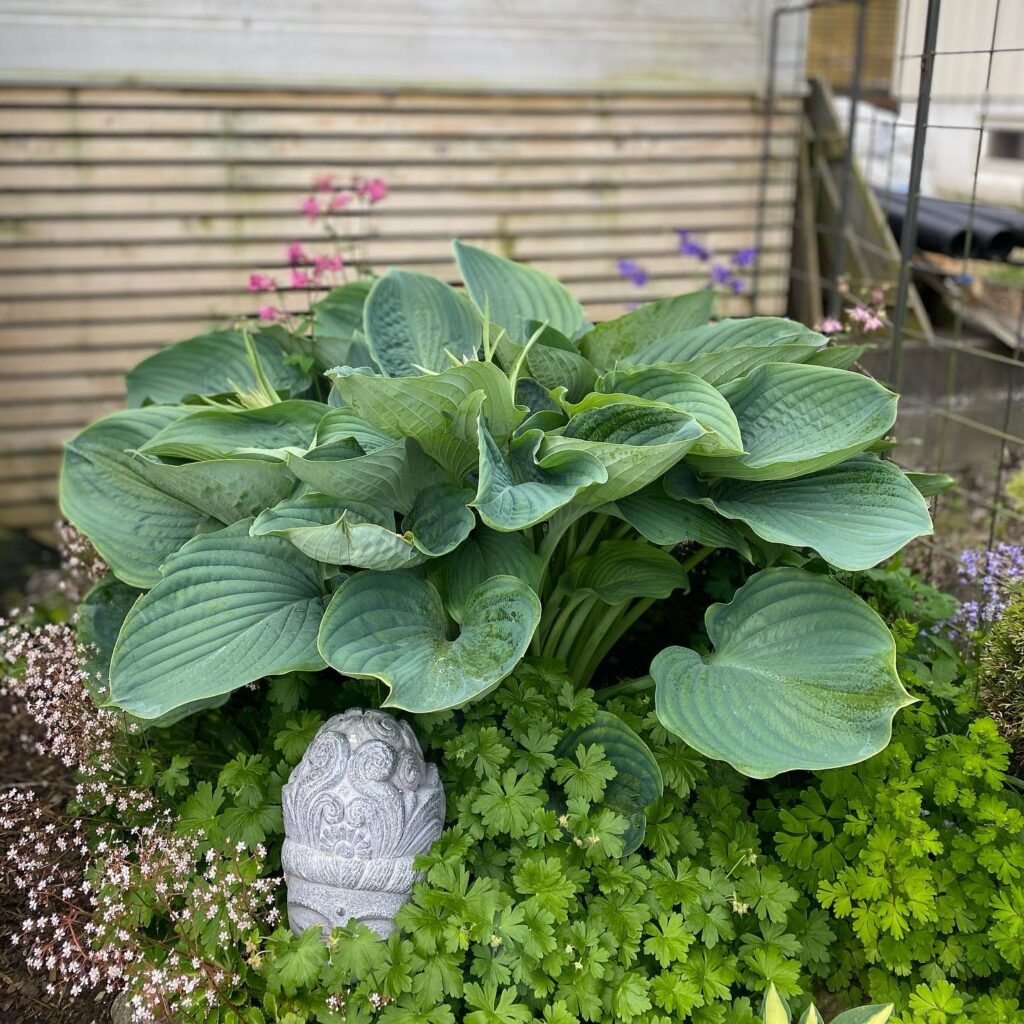
A special place among the outdoor foliage plants holds hosta spp. or plantain lily, spectacular herbaceous perennial native to continental Asia.
Also titled as Queen of shade, hosta thrives happily even in full shade where most other plants suffer from lack of light.
The hosta varieties develop dense tufts of leaves that vary in different sizes, colors, and patterns. Some types may grow over time to three feet tall and wide clusters, while some barely reach one and a half feet like ferns.
For example, Shadowland ‘Empress-Wu’ hybrid (Proven winners) grows four feet tall and six feet wide and is sure to appeal to giant-plants fans.
The colors include various shades of green, combined with white or lime, but there are also magnificent species with blue-green tones.
In addition to color, the foliage plants differ in shape and size: they can be round, heart-shaped, elliptical, and have a pronounced texture with clearly visible veins.
Two feet tall stalks bear bell-shaped slightly fragrant white or pale purple lily-like flowers in mid-summer, followed by fruit with seeds.
This hardy plant easily survives in the gardens in USA climate zone 3 to 9 but can grow in larger containers on the terrace.
So, if you have a place in the garden that the full sun never reaches, you can plant the magnificent hosta and revive the empty, shady areas.
2. Coral Bells (Heuchera)
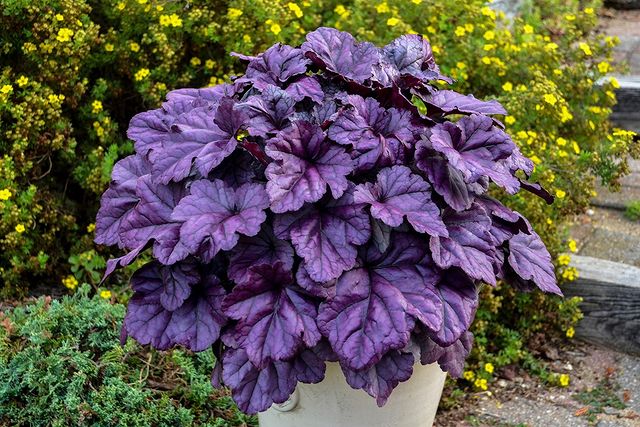
The evergreen perennial plant, native to North America, Coral bells, or Heuchera, is a garden attraction year-round. Its variegated leaves of different shapes and colors stay noticeable even during the winter.
The genus Heuchera includes 37 species, but, thanks to cultivation, today, you can choose among more than 70 types of amazingly colored foliage plants up to two feet tall.
Its round, colorful leaves with serrated, wavy edges, metallic sheen and pronounced veins come in a broad palette of silvery green, burgundy, yellow with orange subtones to unique hybrids from the Proven Winners list such as Dolce Wildberry or Pistachio ambrosia.
Heuchera blooms in late spring from May to July. The flowers are small, white, red or pink, bell-shaped, collected on filigree branched flower stalks, which grow up to three feet tall and appear to hover above a compact leaf form.
Therefore, due to their compact habit and stunning leaf color with the delicate texture, they are an excellent choice for part shade in the gardens, in mixed borders or as a focal point on the balcony among green leaf plants.
RELATED: Bells And Whistles: 16 Different Types Of Coral Bells
3. Angel Wings Begonia
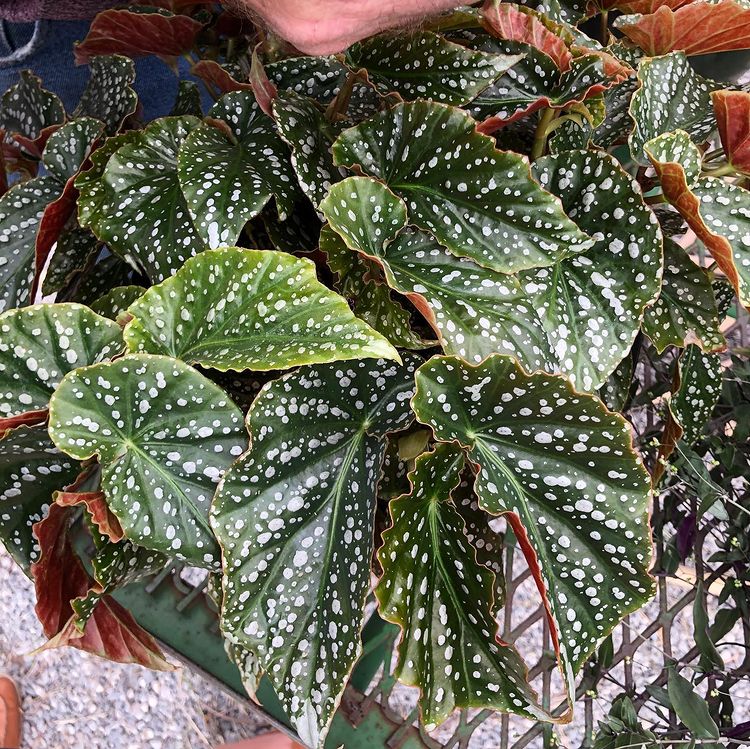
Another tropical accessory for your garden that will bring color and texture is the fantastic Angel wing begonia which got its name after the unusual shape of its leaves.
This plant belongs to the giant begonia types because if you grow it in the garden, it can reach an imposing size of 15 feet!
However, only those who live in the US climate zone 10 to 11 have the privilege of growing this plant in the garden because it is susceptible to low temperatures.
Therefore, it is more common to see begonia grown as an annual plant or a potted indoor plant, spending summer outside.
The main attraction of this plant is the unusual decorative foliage of deep dark green with striking light spots.
The added bonus is attractive pink or white flowers that appear in the middle of the summer.
Like other plants from Brazilian rainforests, Angel wings begonia prefer bright light without direct sun.
It can tolerate full shade but still grows better and blooms more if it gets at least two or three hours of the mild morning or late afternoon sun.
4. Begonia Rex Cultorum
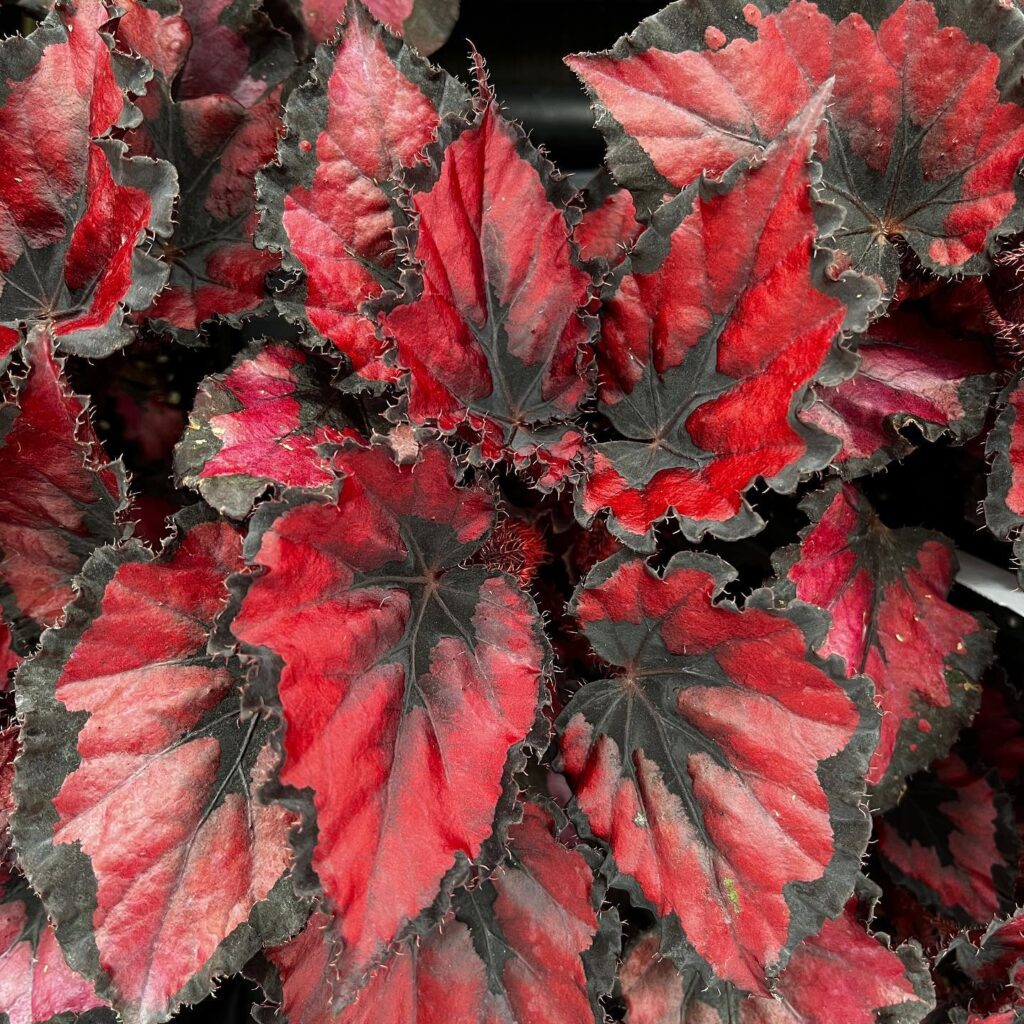
Begonia rex, Painted-leaf begonia or Royal begonia, is undoubtedly one of the most beautiful foliage plants for partial shade in the garden or terrace.
This beauty with large jagged leaves decorated with unreal colors and patterns with metallic reflections originates from the forests of northern India.
You can grow them as low ornamental garden plants in tropical and subtropical climates. As frost-tender plants, they are annual or houseplants in containers in continental areas placed outside during the warmer months.
Mature Begonia rex can produce tiny white or pink flowers of no tremendous decorative value, but the inconspicuous flowers seem unimportant with such stunning leaves.
For a reason, this plant bears the name ‘Begonia with a thousand colors’ since it is difficult to list all shades of green, silver, pink or burgundy with which Mother Nature paints its foliage.
Begonia rex can not withstand direct sunlight because its delicate foliage with velvety texture quickly burns. Therefore, you could place it in a light shade, with a lot of indirect light.
5. Japanese Painted Fern (Athyrium)
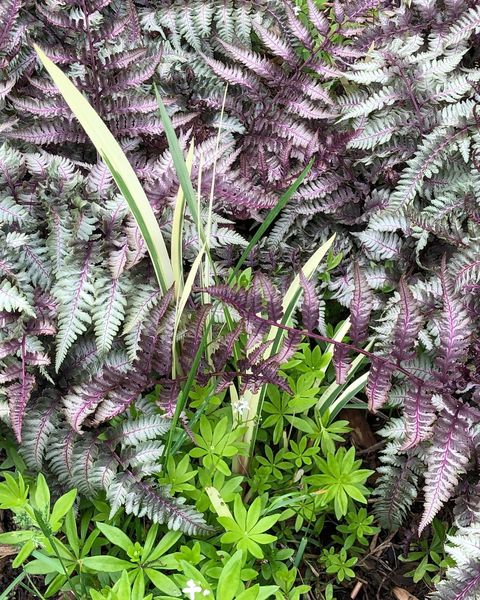
Japanese painted fern, also known as Lady fern with its filigree fronds, looks like burgundy lace flickering in the breeze!
This unusually colored fern of Asian origin offers a unique color and intriguing structure for areas with full sun to partial shade in your garden.
Among the many cultivars of this very decorative fern, the proven winners ‘Crested Surf’ varieties stand out with double-crested tips of 20 to 22 inches tall fronds.
The fern is winter hardy throughout the USA climate zone 3 to 9 and makes a charming addition as a filler in mixed beds or as an accent point in group planting.
Due to the manageable size, they can grow as container plants to add texture and silvery-purple color for your balcony arrangements.
6. Persian Shield (Strobilanthes Dyerianus)
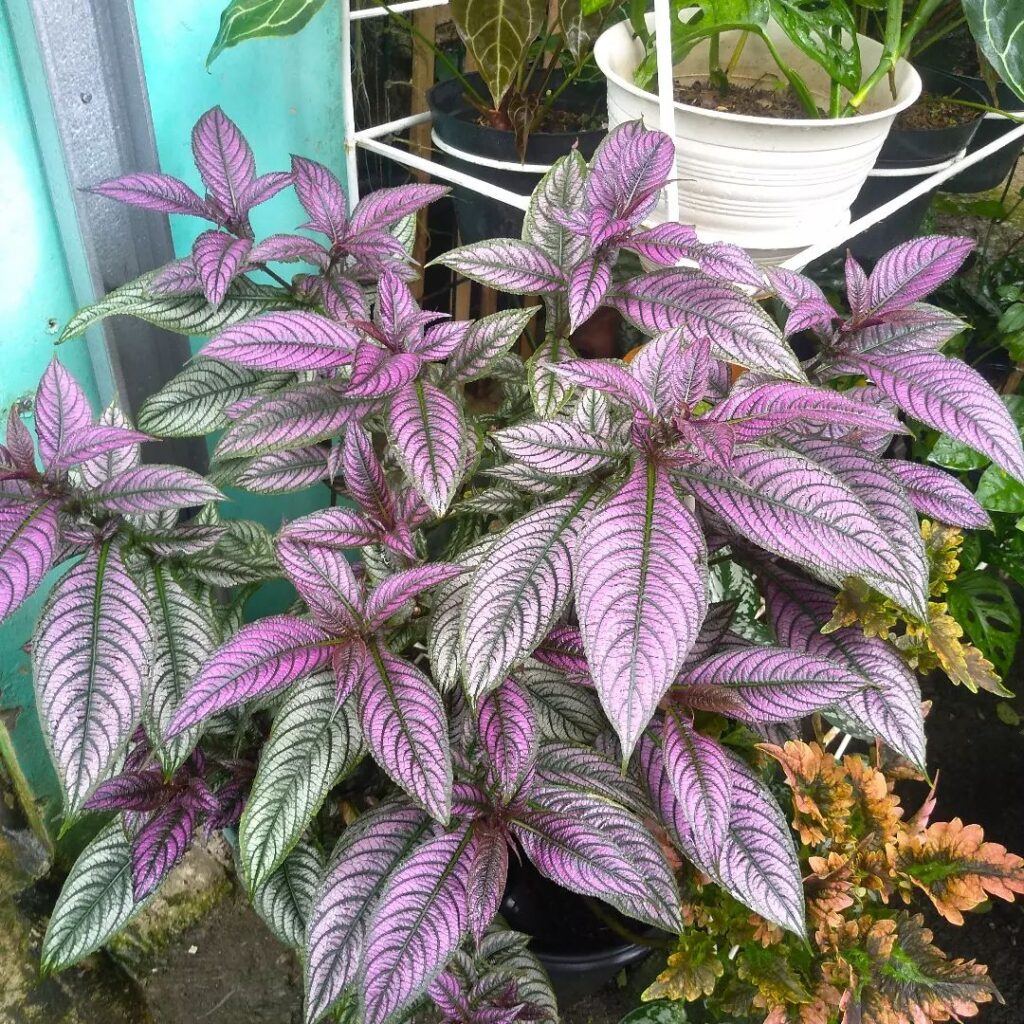
Persian shield is an evergreen tropical plant native to Burma, which belongs to the Acanthaceae family.
It has large, metallic shiny wrinkled dark green foliage with purple and silver shades. It reaches one to two feet in height, with upright growth, and if you pinch its tops, you will get a very compact shrubby plant.
Since it comes from warm regions, it cannot overwinter outside the US climate zone 8 to 11. Therefore it is often grown as an annual plant with decorative foliage in gardens or containers in colder areas treated as houseplants in shady spots.
The Persian shield thrives best on the east or west window, while it needs shade and relatively moist soil in the garden.
Foliage plants for full sun to partial shade
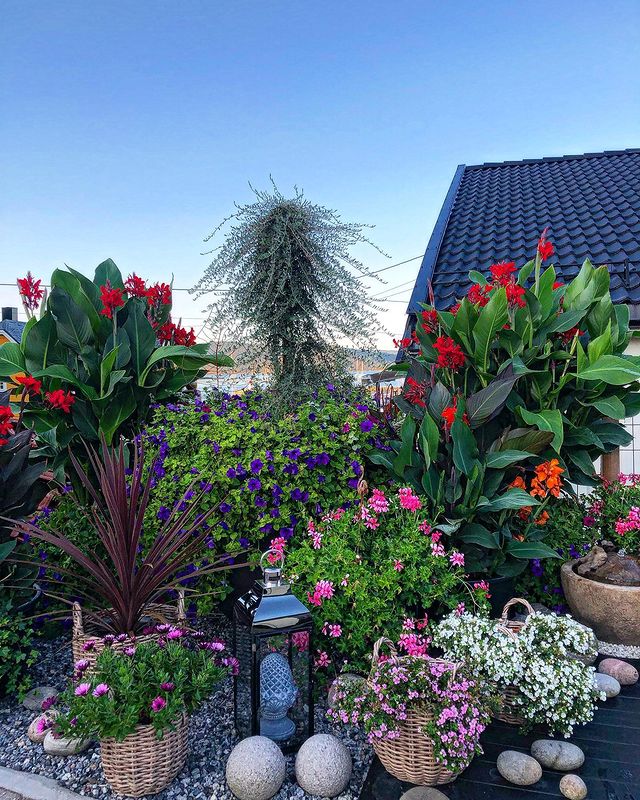
7. Canna Indica
Canna Indica is an impressive, upright, up to five feet tall tropical perennial native to the mountainous regions of Central and South America.
The group of foliage plants stands out not only for its highly decorative large leaves resembling tobacco leaves. B ut also for its striking asymmetrical blooms gathered in gladiolus-like spikes.
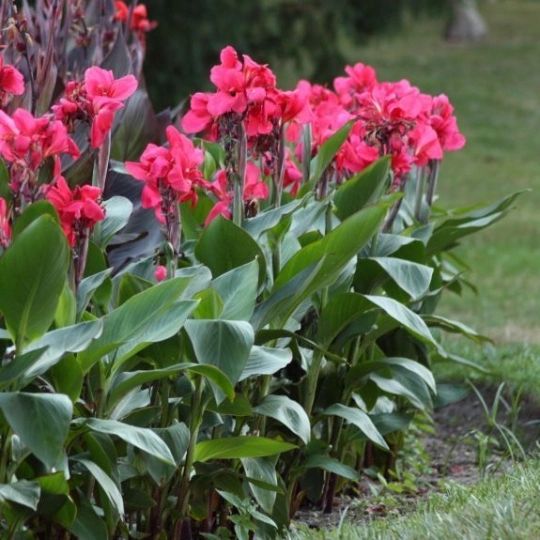
The colors of the flower can be different, red, pink, or yellow. And recently the Proven Winners organization enriched its offer with a new line of Toucan Cannas. With unique fiery dark orange flowers and dark green leaves.
The underground stem rhizomes cannot overwinter on flower beds in gardens in colder climates. So you have to take them out and store them in cold rooms at the end of the growing season.
You can grow Canna in larger pots, starting in early spring after the last frost.
They prefer the sun to a partial shade place, with at least five hours of direct sunlight daily.
8. New Zealand Flax (Phormium)
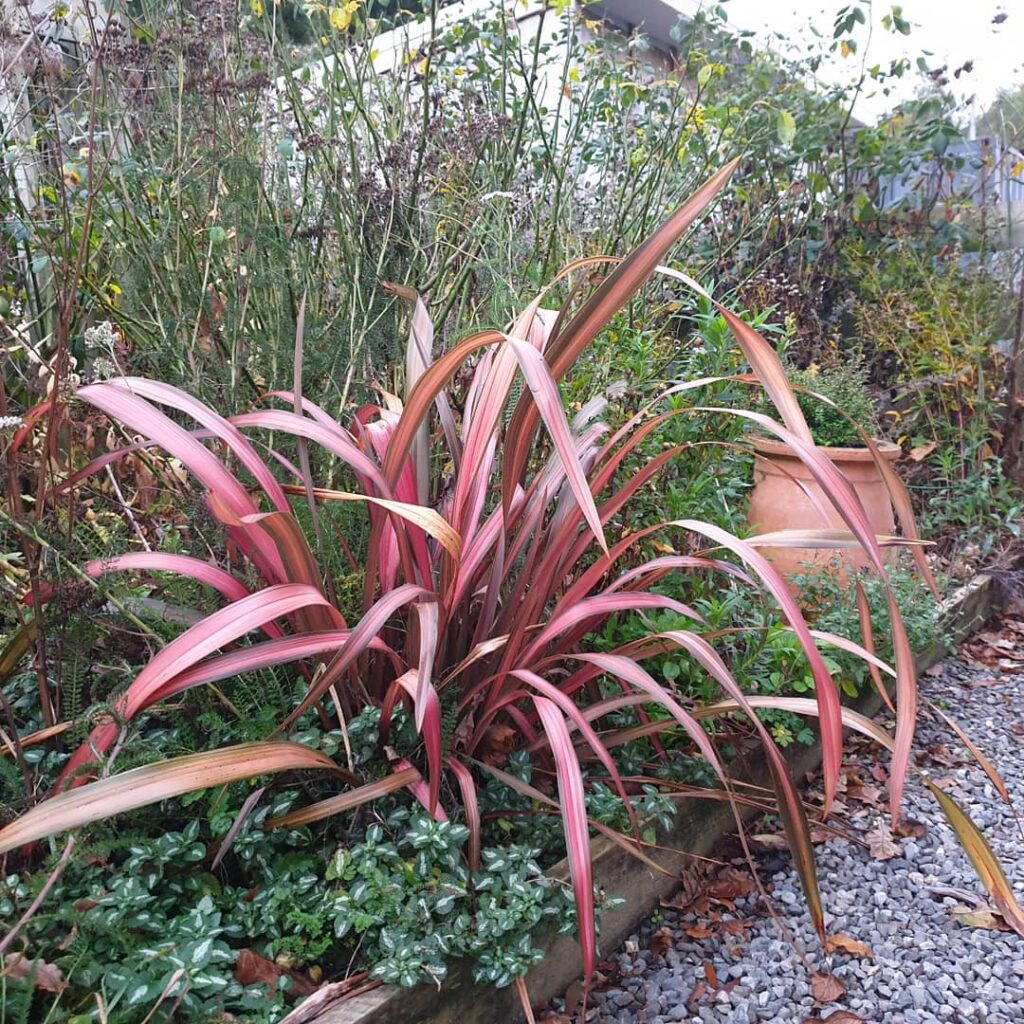
New Zealand Flax is a plant from the Agave family, it grows naturally in the warm parts of New Zealand. It is a perennial plant with erect lanceolate and large foliage with hard edges that forms a dense fan-like leaf rosette.
The foliage colors can be different, and the species with red or longitudinally striped yellow-green leaves are prevalent.
New Zealand flax is difficult to overwinter outside in cold climates. Because temperatures below 21 F destroy both the above-ground part and the root system.
This slow-growing sun lover is best placed in a sunny location, although it can tolerate a partial shade. However, most of the varieties reach their full decorativeness and size only in full sun.
RELATED: Nature is Sweet As! 10 Different Types Of New Zealand Trees
9. Sweet Potato Vines (Ipomoea Batatas)
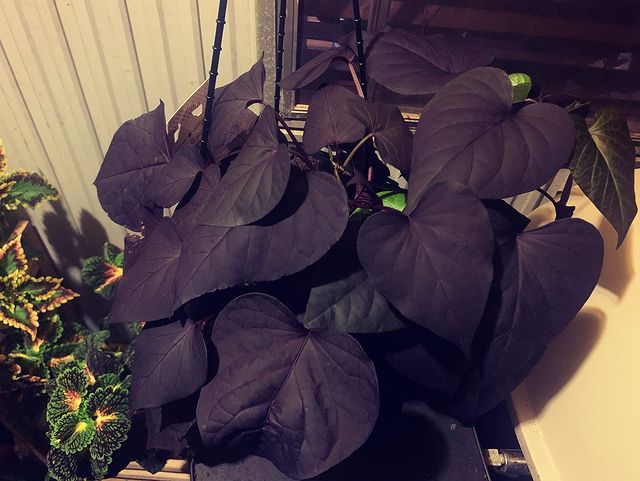
Sweet potato vine originates from tropical America, where its thickened root has long been used in human and animal nutrition.
However, in addition to tasty and edible roots, Sweet potato vines have attracted the attention of growers with very decorative foliage and lush and vining growth.
By targeting selective crossbreeding, growers have created numerous varieties of different colors and leaf shapes. This is why today’s Ipomoea vine is a popular decorative plant for growing in containers or flower beds.
Their value is not in the nutritious roots. But the beautiful foliage in various colors, including shades of green and dark purple, almost black tones.
They look beautiful as they spill over the edge of the container or as a dense ground cover in a landscape bed.
Ipomoea vine is a fast-growing species that prefers full sun to partial shade position. It grows lush and dense. So one plant is enough to fill the standard flower pot and start crawling over the pot’s edges.
Like other tropical plants, Ipomoea is not resistant to low temperatures. So in fall, remove the tubers and store them in a protected area in a box with sawdust or sand.
You can replant the tubers in the spring outside when the danger of frost passes.
10. Elephant Ears (Colocasia Esculenta)
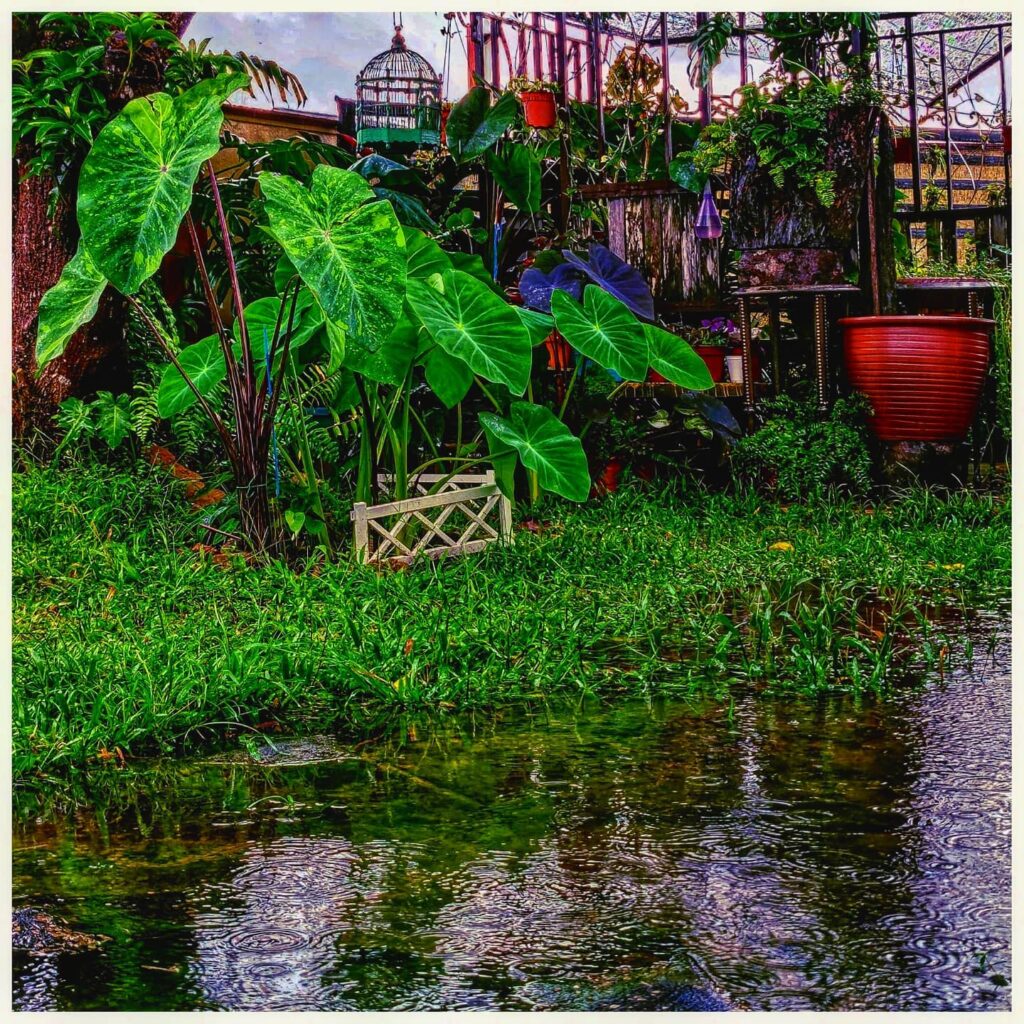
Few plants can create an instant tropical atmosphere in your gardens with their bold shapes of large leaves like Elephant ears, also known as Colocasia Esculenta.
This rhizome plant with edible foliage and roots from the Araceae family, known as Taro, is native to Southeast Asia. It grows on the wet forest edges or along river courses.
Its striking, heart-shaped, thin, rubbery leaves, two feet in diameter resembling a shield or elephant ear, always cause curiosity wherever you plant it!
The whole plant can grow up to eight feet and develop truly giant leaves. But you can only see such specimens in the tropics in their natural environment.
Outside climate zone 10 or 11, it usually grows to a maximum of five feet. But this is still the exact focal point of any garden.
In the climate zone below 8, the plant cannot overwinter outdoors. So in late summer, you should dig up the tubers and store them in a frost-free area.
It is always a thirsty plant, which needs almost damp soil and daily watering.
Moreover, it can grow as an aquatic plant on the pond’s edge. Because it does not mind standing water up to six inches deep.
RELATED: Alocasia Bambino: A Full and Easy Care, Propagation, and Watering Guide
11. Creeping Jenny (Lysimachia Nummularia)
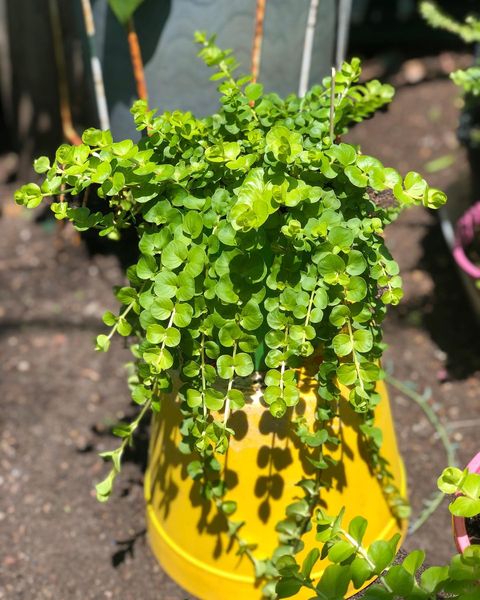
Creeping Jenny, also known as Moneywort, is a beautiful reclining, low-growing evergreen perennial from the Primulaceae family.
The plants have round or heart-shaped light green leaves with a blunt tip and a solid edge that grows on short stalks on stems one and a half feet long.
In early summer, tiny one-inch-wide, yellow single flowers develop upward in the axils of the leaves.
Naturally, this plant grows throughout Europe, Asia and North America in meadows, pastures and other moist soils.
You can grow these tiny plants in containers letting them cascade over the edges or in the garden as an attractive ground cover.
The trendy, fast-growing variety Aurea is well-liked among the fans of these plants. And it combines nicely with trailing hot pink petunias!
If planted in full sun, this variety will quickly green any inferior quality soil, turning it into a charming island of soft green leaves.
Frequently Asked Questions
Are ornamental grasses foliage plants?
Yes, they are. Ornamental grasses are grown primarily for their leaves, although some have very decorative clustered blooms.
What are the most popular outdoor foliage plants?
In addition to the ones mentioned in the article, we can add amaranthus, lungworts, caladium, coleus and many others.
Now that you learned about foliage plants, check out our other articles:
12 Unique Asparagus Flowers (Including Pictures)
5 Breath-taking Types Of Calathea For Your Private Tropic Corner







